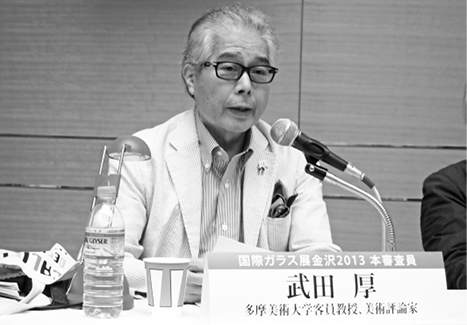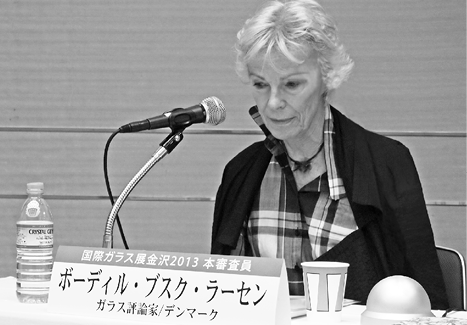Discussion
講評会
Introduction




Takeda ───── I would like to briefly discuss the Preliminary Assessment based on the images held in April this year as well as the Final Assessment by looking at the real works. We received 332 entries for the Preliminary Assessment. The number of entries is smaller than the previous exhibition. The number of nations and regions is almost the same. We have not analyzed the reason why the number of entries has decreased. I am afraid that there are various reasons such as world trend and financial problems to apply for the exhibition held in Japan. The organizer and the Executive Office will analyze the reasons and consider the measures. I hope they will find the way to receive more entries from the world. At the Preliminary Assessment we assessed 332 works based on the images. I felt that the quality of each work is good enough for this international exhibition. Unlike assessing the real works in front of us, it is quite difficult to imagine something only from the images. Although we always face such difficulty in assessing the images, we selected 70 works after exchanging active opinions. For some reasons 68 works were selected for the Final Assessment. Yesterday we completed the Final Assessment of the exhibition. At the moment all the jurors entered the venue where all the works were displayed, they perceived intuitively which works would be prize winners. Each jury has different perspectives. Professor Carlson is a well-known glass artist from the US. Professor Laursen from Denmark, Chairperson of Hempel Glass Museum, has worked as a juror for the first time. She has been involved in glass art for a long time. Professor Yokoyama from Japan is a glass artist. I have worked as a curator for a museum. We had long and thoughtful deliberations. One of the most important things for the assessment is that each juror expresses his or her opinions freely and other jurors listen to him or her thoroughly. This is very basic for the assessment. We could manage to do that although it took a long time. As a result, we selected all the prize winners. Today only Grand Prize and Gold Prize winners are displayed. Other prize winners will be on the screen. The Grand Prize winner looks different seen from different perspectives because of its unique shape. I would like each juror to make comments on each prize winner in turn. It is noticeable that four woks received higher scores than any other work at the first vote. I hope some jurors will explain that particular point. As a whole, the prize winners are excellent. We received more entries from Japan than from abroad. Therefore, quite a few Japanese works were selected as prize winners. Professor Carlson and Professor Laursen honestly admired those original and excellent works from Japan. I am sorry to tell you that Professor Harcuba, a Czech great glass artist in engraving, could not participate in the Final Assessment although we invited him as a juror. We heard that he got out of condition and gave up coming to Japan. He sent a message, “I wish you success”. We would like to begin the Round Table Discussion.

